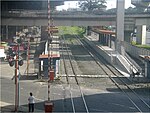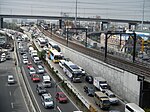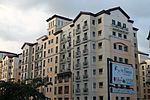Asia Pacific College
1991 establishments in the PhilippinesEducational institutions established in 1991Philippines university stubsUniversities and colleges in MakatiUse Philippine English from November 2022 ... and 1 more
Use mdy dates from November 2022

Asia Pacific College (APC) is a private tertiary education institution in Makati, Metro Manila, Philippines. It was established in 1991 as a non-profit joint venture between IBM Philippines and the SM Foundation. Its program is focused on information technology in consortium with the National University. The Commission on Higher Education certifies the college as one of the four Centers of Excellence in IT Education in the Philippines.APC offers the following schools: Senior High School School of Computing and Information Technologies School of Engineering School of Management School of Multimedia and Arts Graduate School
Excerpt from the Wikipedia article Asia Pacific College (License: CC BY-SA 3.0, Authors, Images).Asia Pacific College
South Luzon Expressway, Makati
Geographical coordinates (GPS) Address Nearby Places Show on map
Geographical coordinates (GPS)
| Latitude | Longitude |
|---|---|
| N 14.53104 ° | E 121.02143 ° |
Address
Asia Pacific College
South Luzon Expressway
1232 Makati
Philippines
Open on Google Maps









